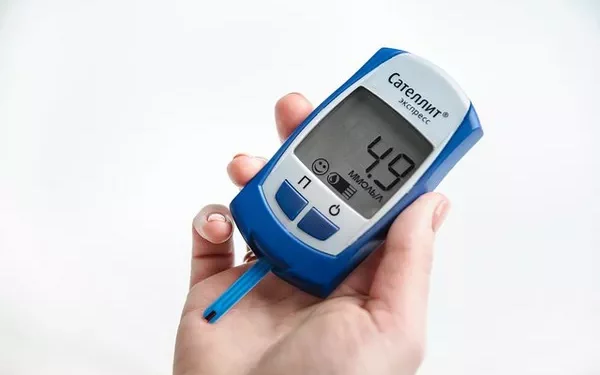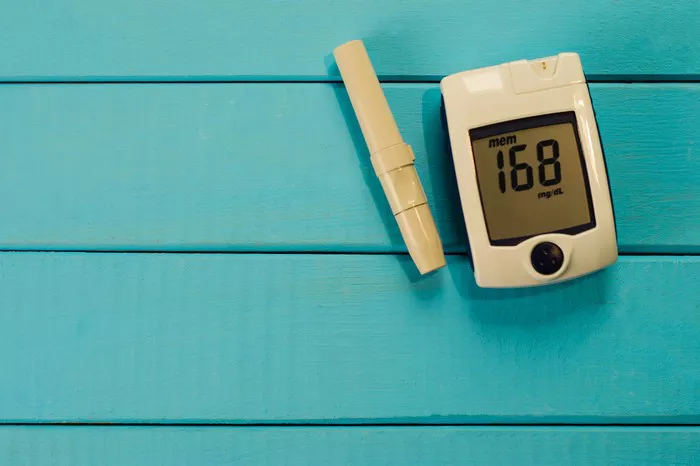Hypoglycemia, commonly known as low blood sugar, is a condition that occurs when the glucose levels in the blood drop below the normal range. While it is often associated with diabetes, hypoglycemia can also occur in individuals without diabetes. Proper diagnosis and management of hypoglycemia are crucial, as untreated hypoglycemia can lead to serious health complications, including loss of consciousness and seizures. One of the most important steps in diagnosing hypoglycemia is performing a blood test to measure blood glucose levels. This article delves into the various blood tests used to diagnose hypoglycemia, their significance, and how they contribute to effective management.
What Is Hypoglycemia?
Hypoglycemia occurs when blood glucose levels fall below the normal threshold, typically defined as less than 70 mg/dL (3.9 mmol/L). Glucose is the primary source of energy for the body’s cells, and maintaining an adequate level of glucose in the blood is essential for normal bodily functions, particularly brain function.
Types of Hypoglycemia
Hypoglycemia can be classified into several types based on its underlying cause:
Reactive Hypoglycemia: Occurs within a few hours after eating, often due to excessive insulin release.
Fasting Hypoglycemia: Occurs when the body is unable to maintain blood glucose levels during periods of fasting.
Drug-Induced Hypoglycemia: Common in individuals taking insulin or other glucose-lowering medications.
Hormonal Deficiency: Caused by deficiencies in hormones like cortisol or glucagon that regulate glucose levels.
Symptoms of Hypoglycemia
Recognizing the symptoms of hypoglycemia is critical for timely diagnosis and treatment. Common symptoms include:
- Shakiness
- Sweating
- Confusion
- Dizziness
- Irritability
- Rapid heartbeat
- Hunger
- Blurred vision
Severe hypoglycemia can lead to loss of consciousness, seizures, and even coma if not promptly treated.
The Importance of Blood Tests in Diagnosing Hypoglycemia
Blood tests play a crucial role in diagnosing hypoglycemia. While symptoms can provide clues, they are not sufficient for a definitive diagnosis. Blood tests allow healthcare providers to measure blood glucose levels accurately and determine whether a patient is experiencing hypoglycemia.
When Are Blood Tests Performed?
Blood tests for hypoglycemia are typically performed under specific circumstances:
During Symptoms: When a patient presents with symptoms of hypoglycemia, a blood test is performed immediately to confirm low blood glucose levels.
Postprandial (After Eating): To diagnose reactive hypoglycemia, blood tests are performed after a meal when symptoms are likely to occur.
During Fasting: In cases of suspected fasting hypoglycemia, blood tests are performed after an extended period without food.
Types of Blood Tests for Hypoglycemia
Several blood tests are used to diagnose and monitor hypoglycemia. Each test provides valuable information about blood glucose levels and other factors that may contribute to hypoglycemia.
1. Fasting Blood Glucose Test
The fasting blood glucose test is one of the most common tests used to diagnose hypoglycemia. It measures the level of glucose in the blood after an individual has fasted for at least eight hours.
Procedure: The patient is asked to fast overnight. In the morning, a blood sample is taken and analyzed for glucose levels.
Normal Range: The normal fasting blood glucose range is typically between 70 and 100 mg/dL (3.9 to 5.6 mmol/L).
Hypoglycemia Diagnosis: A fasting blood glucose level below 70 mg/dL (3.9 mmol/L) is indicative of hypoglycemia.
Significance: This test helps identify fasting hypoglycemia, which can be caused by conditions such as insulinoma (a tumor of the pancreas that produces excessive insulin) or adrenal insufficiency.
2. Oral Glucose Tolerance Test (OGTT)
The Oral Glucose Tolerance Test (OGTT) is used to diagnose reactive hypoglycemia, which occurs after eating.
Procedure: The patient is asked to fast overnight and then given a glucose solution to drink. Blood samples are taken at regular intervals (usually every 30 minutes) for up to two hours to measure glucose levels.
Normal Response: In a normal response, blood glucose levels rise after drinking the glucose solution and then gradually return to normal.
Hypoglycemia Diagnosis: If blood glucose levels drop below 70 mg/dL (3.9 mmol/L) during the test, reactive hypoglycemia may be diagnosed.
Significance: The OGTT helps identify abnormalities in insulin secretion and glucose metabolism that lead to postprandial hypoglycemia.
3. Random Blood Glucose Test
A random blood glucose test measures blood sugar levels at any time of the day, regardless of when the patient last ate.
Procedure: A blood sample is taken at any time, and glucose levels are measured.
Normal Range: A normal random blood glucose level is typically between 70 and 140 mg/dL (3.9 to 7.8 mmol/L).
Hypoglycemia Diagnosis: A blood glucose level below 70 mg/dL (3.9 mmol/L) suggests hypoglycemia.
Significance: This test is particularly useful in emergency situations when immediate diagnosis is needed.
4. Continuous Glucose Monitoring (CGM)
Continuous glucose monitoring (CGM) is an advanced method of tracking blood glucose levels in real-time throughout the day and night.
Procedure: A small sensor is placed under the skin, typically on the abdomen or arm, which measures glucose levels in the interstitial fluid (the fluid surrounding the cells). The sensor sends data to a monitor or smartphone, providing continuous glucose readings.
Normal Range: CGM provides a comprehensive glucose profile, including trends and patterns.
Hypoglycemia Diagnosis: CGM is particularly useful for detecting nocturnal hypoglycemia (low blood sugar during sleep) and identifying patterns of hypoglycemia that may be missed with intermittent blood tests.
Significance: CGM offers valuable insights into glucose fluctuations, helping to fine-tune treatment and prevent hypoglycemia.
5. Plasma Insulin and C-Peptide Levels
Measuring plasma insulin and C-peptide levels can provide additional information in cases of suspected hypoglycemia, particularly when an insulinoma or other insulin-related disorders are suspected.
Procedure: Blood samples are taken to measure the levels of insulin and C-peptide, a byproduct of insulin production.
Normal Range: Insulin and C-peptide levels vary depending on fasting and postprandial states.
Hypoglycemia Diagnosis: Elevated insulin and C-peptide levels in the presence of hypoglycemia suggest endogenous hyperinsulinism, such as insulinoma.
Significance: This test helps differentiate between endogenous (internal) and exogenous (external, such as insulin injections) causes of hypoglycemia.
6. Hormonal Testing
Hormonal imbalances can contribute to hypoglycemia, particularly deficiencies in cortisol, growth hormone, and glucagon. Hormonal testing may be performed to identify underlying endocrine disorders.
Procedure: Blood tests are conducted to measure levels of specific hormones.
Significance: Identifying hormonal deficiencies can lead to targeted treatment, such as hormone replacement therapy, to prevent recurrent hypoglycemia.
Interpreting Blood Test Results
Interpreting blood test results for hypoglycemia requires careful consideration of various factors, including the timing of the test, the patient’s symptoms, and any underlying medical conditions.
1. Correlating Blood Glucose Levels with Symptoms
A diagnosis of hypoglycemia is often confirmed when low blood glucose levels correlate with the patient’s symptoms. For example, if a patient experiences shakiness and dizziness, and a blood test reveals a glucose level below 70 mg/dL (3.9 mmol/L), hypoglycemia is likely.
2. The Role of the Whipple’s Triad
The Whipple’s Triad is a set of criteria used to diagnose hypoglycemia:
- Symptoms of hypoglycemia (e.g., shakiness, sweating, confusion)
- Low plasma glucose concentration
- Relief of symptoms after raising blood glucose levels
All three criteria must be met for a diagnosis of hypoglycemia.
3. Identifying the Underlying Cause
Blood tests not only confirm hypoglycemia but also help identify the underlying cause. For example, elevated insulin levels in the presence of hypoglycemia may indicate an insulinoma, while low cortisol levels may suggest adrenal insufficiency.
Managing Hypoglycemia Based on Blood Test Results
Once hypoglycemia is diagnosed, the focus shifts to managing the condition to prevent future episodes. Blood test results guide the management plan, which may include dietary changes, medication adjustments, and treating underlying conditions.
1. Dietary Management
For reactive hypoglycemia, dietary changes such as eating smaller, more frequent meals, and choosing foods with a low glycemic index can help stabilize blood glucose levels.
2. Medication Adjustments
In patients with diabetes, adjusting the dose or timing of insulin or oral hypoglycemic medications can prevent hypoglycemia. Blood test results help fine-tune these adjustments.
3. Treating Underlying Conditions
If blood tests reveal an underlying condition, such as an insulinoma or adrenal insufficiency, treating the condition can prevent recurrent hypoglycemia. This may involve surgery, hormone replacement therapy, or other targeted treatments.
See also: What Is Type 1 Diabetes Known As?
Conclusion
Blood tests are essential tools in the diagnosis and management of hypoglycemia. From the simple fasting blood glucose test to the advanced continuous glucose monitoring, these tests provide critical information that guides treatment and prevents complications. Understanding the various blood tests available and their significance can empower patients and healthcare providers to manage hypoglycemia effectively and improve overall health outcomes. Whether for diagnosing reactive hypoglycemia, fasting hypoglycemia, or drug-induced hypoglycemia, blood tests are the cornerstone of accurate diagnosis and successful management.
Related topics:
What Is the Underlying Cause of Type 1 Diabetes?



























